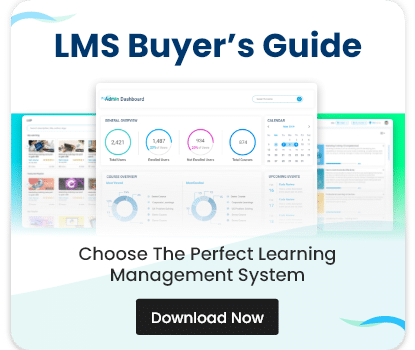Learning and development (L&D) managers face new challenges in today’s digital world. The rapid pace of technological advancements, such as AI and automation, requires L&D programs to adapt and keep up. Outdated legacy platforms hinder interactive learning and engagement, leaving employees dissatisfied. Irrelevant courses and generic recommendations further contribute to this disconnect.

We have
something for you!
Are you still figuring out which LMS is the best? Grab the chance to explore the LMS Buyer's Guide and get started.
















